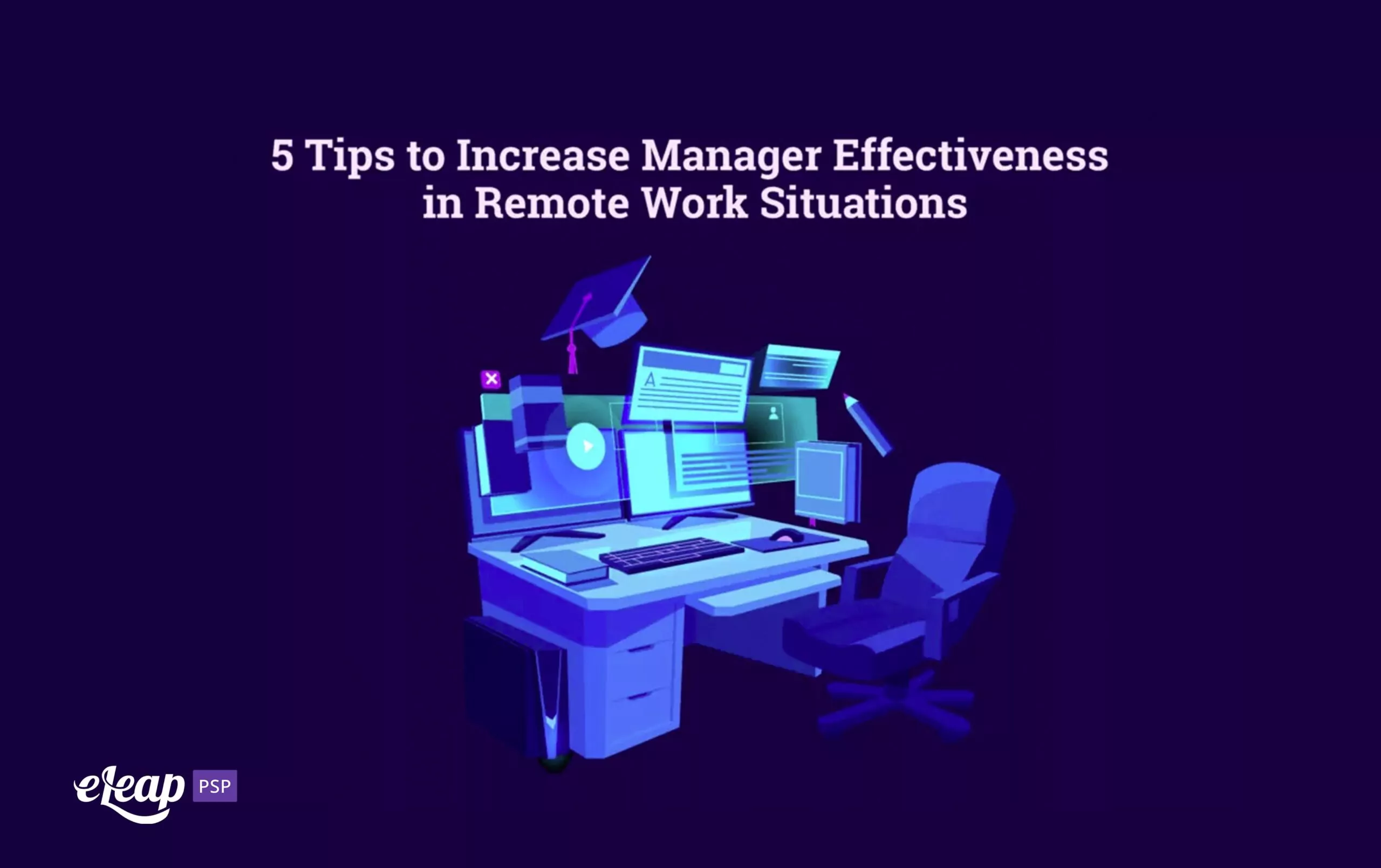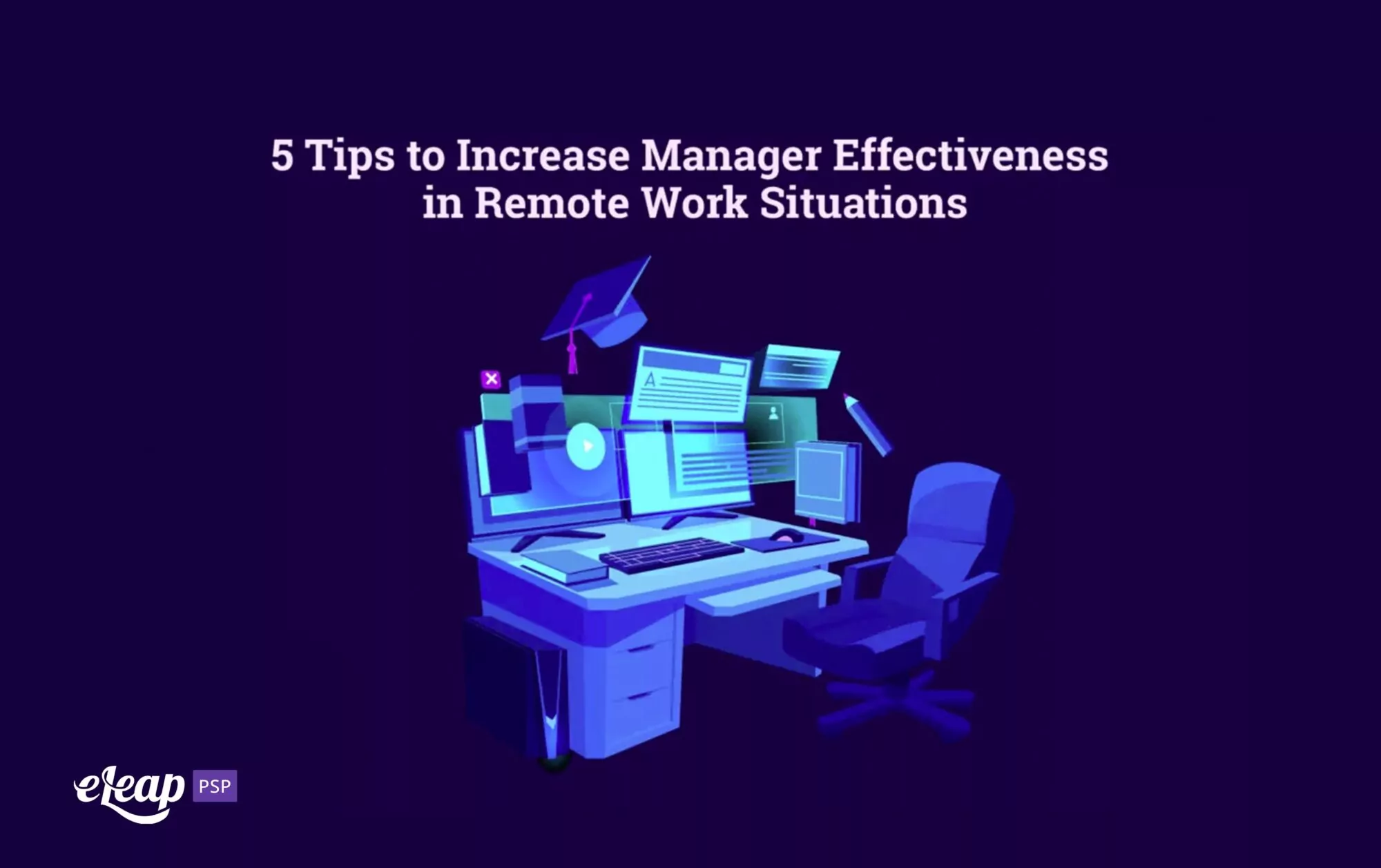5 Tips to Increase Manager Effectiveness in Remote Work Situations

In many ways, management is something that has to be practiced in person. Many of the skills your managers rely on evaporate when the situation turns remote. However, that doesn’t mean that they can’t be effective. It really just requires a shift in perception.
The true effectiveness of a manager is making sure that your people are doing the right thing at the right time, and communicating the right messages to others. That’s easier to accomplish in a remote work situation than you might think. To help point you in the right direction, we’ll cover five tips below that will make your managers more effective in this new normal and moving forward.

Check-in Weekly with All Team Members
In a physical location, managers can walk the halls, checking in on individual team members in person. In a remote work situation, that’s not possible, but it is no less important. It’s even more critical for managers to check on team members in a remote work situation because, without those check-ins, it becomes easy to feel disconnected, isolated, ineffectual, and unvalued. It also becomes easier for employees to get off track when it comes to their responsibilities and duties.
We recommend that you check in on your team members at least once a week. Doing so helps ensure that communication remains high, that team members feel valued and connected, and that projects stay on track. Productivity, reaching goals, morale, trust, and engagement also increase with weekly check-ins.
What format should those check-ins follow, though? While going with a freeform format can be beneficial in some cases, we recommend that you build a few key elements into each check-in. These include the following:
- Check how they’re feeling. You could simply have them rate this on a scale of 1-10, or you could do a mini-dive into how they’ve been doing since the last check-in.
- Have the team member give a simple visual representation of their progress toward their goals or objectives. For instance, green would be all good, yellow might mean some issues, while red could mean full stop.
- Have them share a list of priorities for the coming week so the manager can bump that list against their own and make any needed course corrections.
- Ask a few key questions of each team member, like:
- What wins do you want to share from last week?
- What challenges are you facing?
- How can I support your efforts?
Make Time for One-on-Ones
Don’t let the check-ins become a replacement for your regular one-on-ones. These should still occur, even with check-ins and even in a remote work situation. Check-ins can be over the phone, by text/chat, or by video. However, one-on-ones should be held over video to more closely approximate the in-person experience.
While check-ins shouldn’t replace one-on-ones, you can use them to fuel and accelerate these other sessions. Take the information you learn from your weekly check-ins and incorporate that into your one-on-ones. Doing so allows you to achieve a few critical considerations, including the following:
- You get a lot of the time-consuming updates out of the way because this information has already been communicated during the weekly check-in.
- You already know about problem areas and can devote more time to exploring them and their potential solutions
- You’re aware of problem areas and challenges and can work on solutions during these meetings rather than just getting up to speed.
We recommend having a one-on-one with each team member either once per week or every other week. Combined with regular check-ins, this allows you to keep each team member connected, help them feel valued and heard, and ensure that projects are all moving forward.
Spontaneously Message or Call Team Members
In addition to planned meetings and check-ins, it’s important to break out of the mold so to speak. Use your phone, Slack, Zoom, or something else and check in periodically, out of the blue. This doesn’t necessarily require that you spend a ton of time with every person, either. Simple, quick, meaningful messages and questions can do the trick. Think:
- How are you doing today?
- Do you have the resources needed to accomplish XYZ?
- How’s project X coming along?
- What can I do to make your day better?
Institute Open Office Hours Each Week
Without a physical office, it can be challenging to keep office hours, but it’s important to approximate the in-office experience. Why? Simply put, you need a block of time when it’s possible for your team members to come to you with problems, questions, or concerns. Set a block of time each week that is specifically designated for office hours.
Stay on Track with Performance Reviews
While we’re not arguing that you bring back those outdated annual or biannual performance reviews, we do recommend that you stay on track with reviewing employee performance. You’ll find that the regular rhythm of check-in and one-on-one helps ensure that your reviews are brief, effective, and streamlined. We recommend these reviews take place several times per year, and that you allow your team members to provide feedback on your performance.
These reviews are also ideal times to focus not just on performance management, but on aligning performance with upskilling and learning management. Tie it in with career development, and you’ll find a great deal more value than if you strictly focus on employee performance in their current role. Remember – you must take a holistic view of each individual. You cannot separate performance and learning. They’re two sides of the same coin.
Achieving Success in a Remote Situation
While it can be challenging for managers to be as effective in a remote work situation, it’s not impossible. Use the tips we’ve outlined above to help streamline and improve processes, make your team members feel connected, valued, and heard, and you’ll find it’s simpler to be effective in your role. Despite the new normal and no matter how long it continues, it is possible to become a very effective remote manager.